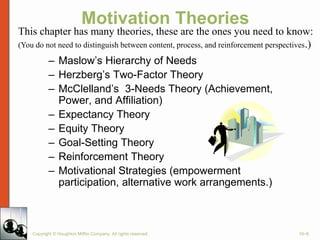In the intricate dance of human motivation, rewards-boost-motivation/” title=”Fit for the Prize: How Rewards Boost Motivation”>positive reinforcement often takes center stage, celebrated as a beacon of encouragement and progress. From childhood, we are conditioned to associate rewards with achievement, whether it’s a gold star on a homework assignment or a bonus at work. This method, deeply embedded in educational systems and workplace cultures alike, promises to propel us towards our goals with the allure of recognition and reward. Yet, amidst the clamor of applause and the glitter of trophies, a question quietly emerges: Is positive reinforcement truly the best path to sustained motivation, or does it sometimes cast a shadow over other, perhaps equally effective, methods? As we delve into the psychology of motivation, we embark on a journey to unravel the complexities of this age-old strategy, exploring its strengths, limitations, and the myriad ways it shapes our pursuit of success.
Understanding the Science Behind Positive Reinforcement
At the core of positive reinforcement lies the fundamental principle of behavioral psychology: behaviors that are followed by pleasant consequences are more likely to be repeated. This principle, popularized by B.F. Skinner, involves the strategic use of rewards to encourage desirable behavior. When applied effectively, positive reinforcement can create a cycle of motivation and achievement, fostering an environment where individuals feel valued and inspired. However, the effectiveness of this approach depends on several factors, such as the individual’s personality, the nature of the task, and the type of reward.
- Individual Differences: Not everyone responds to rewards in the same way. While some may be motivated by tangible rewards, others may find intrinsic rewards, such as personal satisfaction, more fulfilling.
- Task Complexity: Simple tasks may benefit from frequent rewards, but complex tasks might require more nuanced reinforcement strategies to maintain motivation.
- Type of Reward: The reward should be meaningful and relevant to the individual. Whether it’s praise, a bonus, or extra leisure time, the key is to align the reward with the person’s values and goals.
By understanding these elements, we can tailor our approach to positive reinforcement, ensuring that it remains a powerful tool in our motivational arsenal.

Exploring Alternative Motivation Strategies
While positive reinforcement often takes center stage in discussions about motivation, exploring alternative strategies can reveal a more nuanced approach to sustaining drive. Intrinsic motivation, for instance, leverages the satisfaction derived from the activity itself rather than external rewards. This strategy encourages individuals to find personal meaning and enjoyment in their tasks, fostering a deeper commitment. Additionally, goal-setting techniques that involve breaking down larger objectives into smaller, manageable tasks can enhance motivation by providing a clear roadmap and frequent feelings of accomplishment.
- Intrinsic Motivation: Engaging in activities for their inherent satisfaction.
- Goal-Setting: Breaking down larger goals into achievable steps.
- Negative Reinforcement: Removing negative stimuli to encourage behavior.
- Social Motivation: Leveraging peer influence and teamwork.
Another compelling strategy is negative reinforcement, which involves removing an unpleasant stimulus when the desired behavior occurs, thereby increasing the likelihood of that behavior being repeated. Moreover, tapping into social motivation by creating environments where teamwork and peer influence are encouraged can lead to shared success and communal inspiration. By blending these diverse approaches, individuals can craft a personalized motivational framework that resonates with their unique needs and circumstances.

Balancing Positive Reinforcement with Constructive Feedback
When exploring motivation strategies, it’s essential to recognize that a harmonious blend of positive reinforcement and constructive feedback can lead to more sustainable outcomes. Positive reinforcement, with its focus on rewarding desirable behavior, undeniably boosts morale and encourages repetition of those actions. However, an exclusive reliance on this approach may lead to complacency or a lack of growth in areas that require improvement. Integrating constructive feedback ensures that individuals are not only celebrated for their strengths but are also guided to understand and enhance their areas of weakness.
- Encourage Growth: Constructive feedback provides a roadmap for personal and professional development, helping individuals identify specific areas for improvement.
- Promote Resilience: Facing constructive criticism builds resilience, teaching individuals to view challenges as opportunities rather than obstacles.
- Balance Praise with Guidance: While positive reinforcement boosts confidence, constructive feedback ensures that confidence is grounded in reality and directed towards growth.
By striking a balance, we create an environment where motivation is not just a fleeting burst of energy, but a sustained and evolving journey.

Crafting a Personalized Motivation Plan
Crafting a plan that resonates with your personal style is key to sustained motivation. It’s not always about positive reinforcement; sometimes, a blend of different techniques can work wonders. Understand your unique triggers—what genuinely gets you moving? Is it the satisfaction of ticking off a task, or perhaps the thrill of competition? Recognizing these can help tailor a plan that not only keeps you engaged but also fuels your passion.
- Set Specific Goals: Clear, achievable goals provide direction and purpose.
- Mix Rewards and Challenges: Balance positive reinforcement with challenges to keep things interesting.
- Reflect and Adjust: Regularly assess your progress and be open to modifying your plan as needed.
Consider integrating mindfulness practices or even negative reinforcement sparingly, such as setting consequences for missed deadlines, to maintain accountability. The key is flexibility—your motivation plan should evolve as you do, adapting to your changing needs and aspirations.
